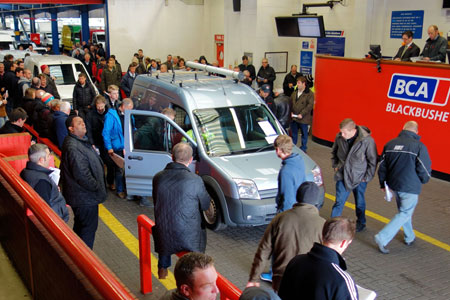The key to running vans cost-effectively is by looking at their wholelife running costs.
These figures include the front-end price of the vehicle, running costs such as fuel and servicing and the predicted residual value – ie, what the vehicle is expected to make when it is sold.
Van manufacturers make great play of courting the experts from guides such as CAP and Glass’s as they know that a thumbs-down on residual predictions can spell doom for a new van when launched.
Manufacturers pull out all the stops to make improvements that will add value not just for first buyers, but further down the line too.
More safety features are being added as standard.
Electronic stability control systems (ESC), which help prevent sideways skids, are now standard on all vans from Volkswagen, Ford, Mercedes-Benz and Iveco, while Fiat has just added it as standard on Ducato.
But do these extras really make a difference when it comes to rolling your vans out for sale at your local auction centre?
According to Duncan Ward, BCA’s business development manager – commercial vehicles, it is not attributes such the metallic paint that will attract buyers, because many simply want a basic van to do the job.
Ward says: “The van market is always the poor relation in terms of vehicle specification.
“The new van buyer is generally a corporate owner and the manufacturers inevitably focus on the needs of that sector, particularly in the areas of fuel efficiency and emissions, driving safety, parking aids and vehicle security.
“The first corporate owner will want to ensure that all the vehicles are fit for purpose and are presented in the appropriate corporate identity. However, the used buyer has a completely different set of aims and objectives.
“The second user will value air-conditioning and a good retail colour, but will inevitably be less concerned with low CO2 technology or stability systems.
“Feedback from buyers attending BCA’s regular LCV Forum underline this, with the condition and presentation of LCVs being critical to the initial buying decision, with mileage, specification, and the ‘pedigree’ of the seller also important.
“Remembering that the next owner is likely to be a small business or sole trader then other factors also assume importance.
"The engine and payload is important to the building trade, while plumbers and electricians will look for internal storage and racking and a small catering company may value a side-loading door.”
Manufacturers are aware of the need to support the residual value of their LCVs and are keen to improve them.













Login to comment
Comments
No comments have been made yet.